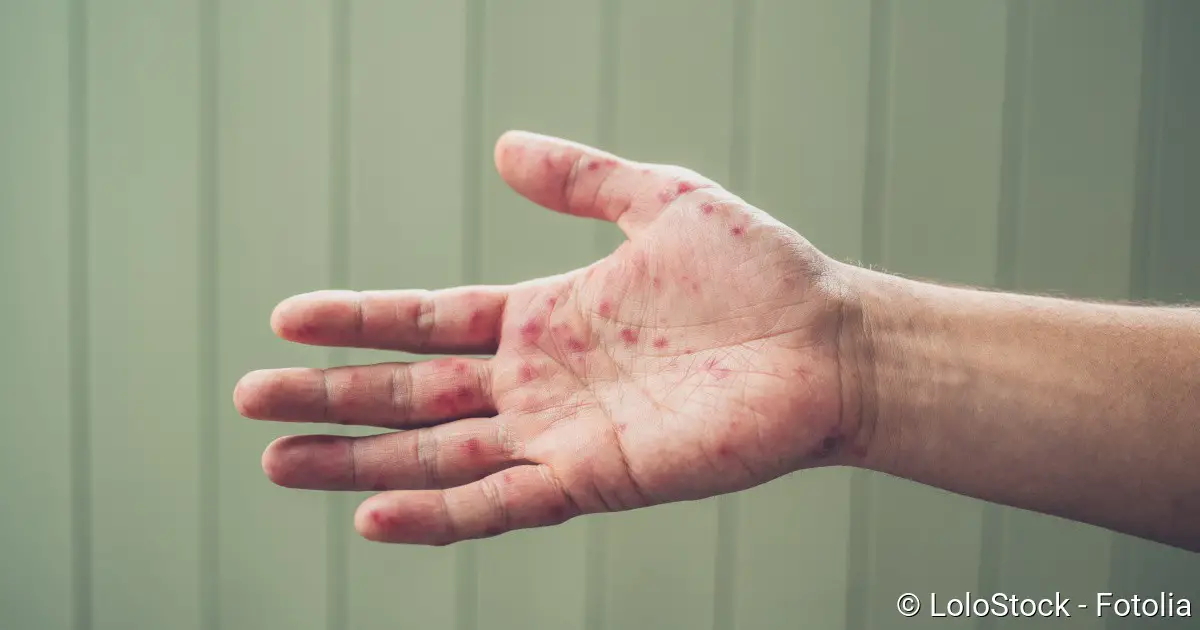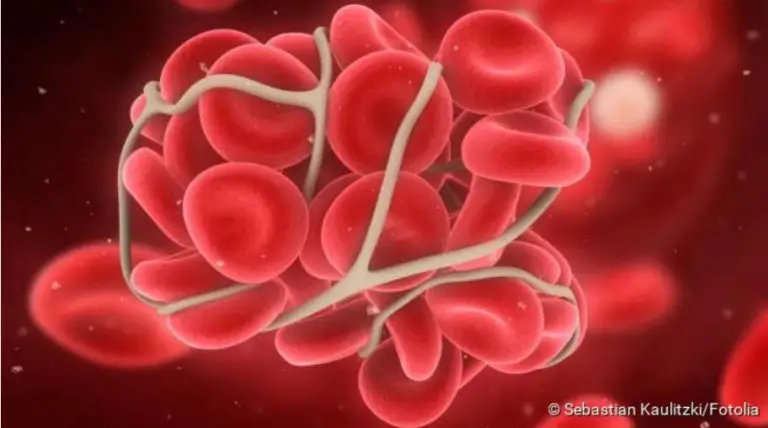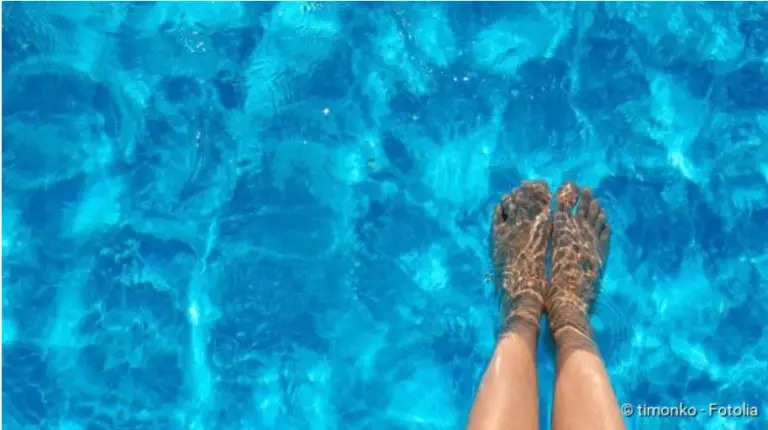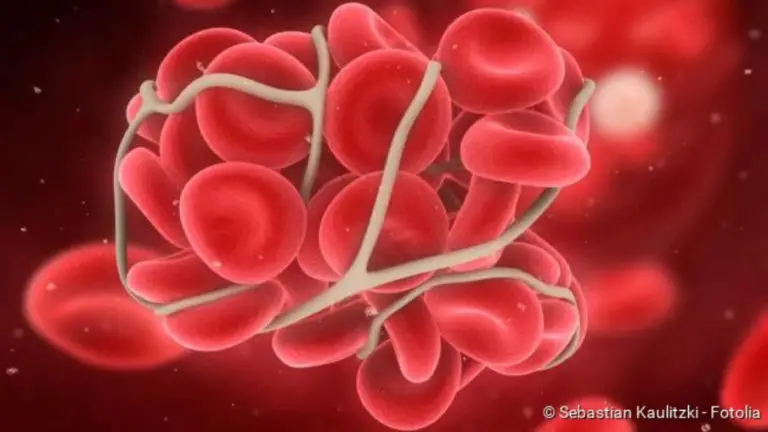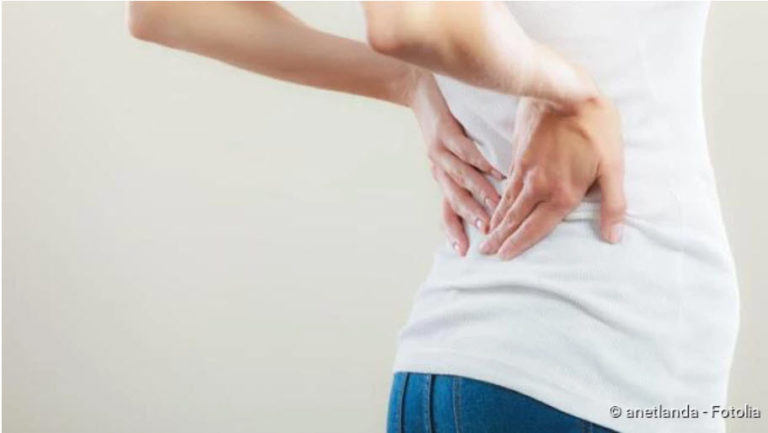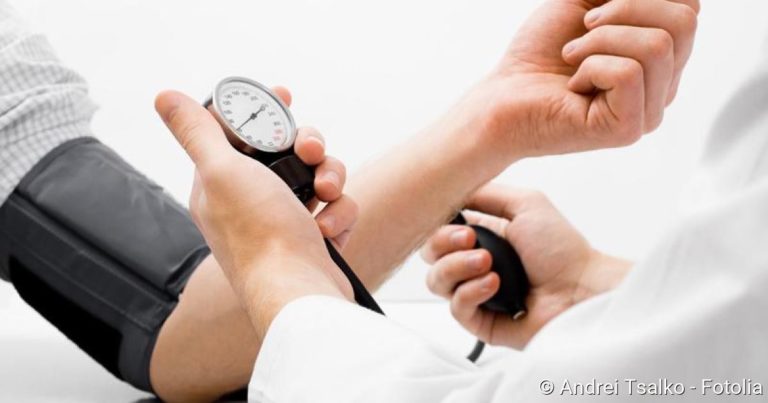Hand-foot-and-mouth disease: infection, symptoms, treatment
Brief overview
- What is the hand-foot-and-mouth disease? A highly contagious viral disease that occurs mainly in (young) children and people with immune deficiency. It is sometimes also called “false mouth and claw disease” or “hand-foot-mouth exanthema”.
- Infection: via droplet infection or smear infection
- Symptoms: First flu-like symptoms, then red spots and blisters on hands, feet and around the mouth. Often the infection also runs without symptoms.
- Diagnosis: The doctor often recognises the disease from the typical symptoms and with the help of information from the anamnesis interview. In severe or unclear cases further examinations (blood, stool) are useful.
- Treatment: Alleviation of the symptoms with painkilling tinctures, calf compresses to reduce fever etc.
- Prognosis: In most cases, the hand-foot-and-mouth disease heals by itself and without complications. Rarely do complications develop by spreading the infection to internal organs (e.g. meningitis).
Hand-foot and mouth disease: Infection
The triggers of hand-foot-and-mouth disease (various enteroviruses) occur everywhere (ubiquitously) in the environment and are highly infectious. The disease is transmitted from person to person: This can happen directly via body fluids such as nasal and pharyngeal secretions, saliva or secretion of the typical skin blisters. When infected persons cough or sneeze, for example, they can distribute tiny droplets of saliva in the environment, which can transmit the pathogen to healthy people (droplet infection). Infection is also possible when touching the vesicle secretion.
In addition, hand-foot-and-mouth disease can be transmitted via smear infection: The virus-containing secretion droplets can contaminate objects and surfaces such as cutlery or door handles, which then become a source of infection for healthy people. In addition, infected persons excrete the viruses via the stool. If they do not wash their hands (properly) after defecation, they can also contaminate water taps, door handles etc. in this way.
The incubation period of hand-foot-and-mouth disease, i.e. the time between infection and the appearance of the first symptoms, is on average three to ten days. Sometimes, however, the infection becomes noticeable before (at the earliest one day after infection) or much later (up to one month later).
Duration of the risk of infection
Patients are most contagious in the first week of the disease. In this phase the viruses multiply particularly strongly, so that they are also released into the environment in large numbers (secretions, stool).
However, there is still a certain risk of infection even after the symptoms of the hand-foot-and-mouth disease (rash etc.) have already subsided: Infected persons excrete the pathogens with the stool, sometimes for weeks. After going to the toilet or changing diapers you should therefore wash your hands thoroughly!
Many infected persons (especially adults) show no symptoms of the disease. But they’re still contagious!
Hand-Foot-Mouth Disease: Symptoms
The term “hand-foot-and-mouth disease” already gives an idea of the parts of the body where the characteristic symptoms of the disease appear. Initially, however, it manifests itself in flu-like symptoms such as fever, poor performance, sore throats and limbs and loss of appetite.
About one to two days later, painful red spots develop in the oral cavity (tongue, gums, oral mucosa) as well as around the mouth (perioral), which become small blisters or superficial ulcers (aphthae) after a short time.
At about the same time as the red spots in the mouth area or a few hours later, a rash develops on the hands and feet: It usually appears in the form of many red spots of different shapes and sizes, which at first usually do not itch. However, this can change if bubbles form in the reddened areas. Typically, the palms of the hands and the soles of the feet are affected by this rash. However, it can also occur in other places (back of the hand, buttocks, genital area, knees, elbows, etc.).
In some patients, the fingernails and toenails come off about four to eight weeks after the disease has subsided.
The skin blisters in hand-foot-and-mouth disease secrete a secretion that contains many of the viruses that cause the disease. The diseased person thereby transmits the viruses to other parts of his body on the one hand, but also – by touching objects – to other people. Thorough hygiene is therefore very important during the illness!
However, sick people do not always have (such) complaints. Doctors assume that the described symptoms only occur in about 20 percent of cases. In four out of five infected people no symptoms appear. Especially in adults, the symptoms of hand-foot-and-mouth disease are often very mild. They therefore often do not notice anything at all about the infection. The same applies to children over ten years of age. Nevertheless, there is a risk of infection for others.
If you suspect that you have the disease, for example because you notice individual (unspecific) symptoms, you should avoid being in the presence of small children during the period of the disease.
Hand-Foot-Mouth Disease: Pregnancy & Newborns
If a pregnant woman is infected with the hand-foot-and-mouth disease, there is generally no reason to worry: the infection is usually very mild or completely without symptoms (asymptomatic) during pregnancy.
If the pregnant woman develops the symptoms of hand-foot-and-mouth disease shortly before or after giving birth, she can transmit the infection to the newborn. In most babies the course of the disease is mild. Rarely does the infection spread to internal organs (such as liver, heart) and can then be very severe. This risk is highest in newborns in the first two weeks of life.
Hand-Foot-Mouth Disease: Treatment
The hand-foot-and-mouth disease cannot be treated causally, i.e. there are no drugs against the triggering viruses. However, this is not necessary, because the disease is usually harmless. The treatment is limited to alleviating the symptoms. For example, a pain-relieving and antipyretic drug can be given, for example with the active ingredient paracetamol.
Acetylsalicylic acid (ASA) is also a popular pain and fever remedy. However, it is not suitable for children: in their case, the drug in combination with a viral infection can cause serious complications such as Reye syndrome.
For painful blisters in the mouth, the doctor may prescribe a mild, pain-relieving tincture to be swabbed or rinsed. This usually contains the active ingredients chlorhexidine or lidocaine. Various herbal remedies (chamomile, lemon balm, thyme) can also provide relief from symptoms of hand-foot-and-mouth disease.
Despite the painful blisters in the mouth, patients should drink enough. Otherwise there is a risk of dehydration, especially for children.
Antibiotics are generally not effective for viral infections, as they only help against bacteria. In some cases, however, a bacterial infection (superinfection) can develop in addition to the viral hand-foot-and-mouth disease. Then antibiotic treatment may be necessary.
Hand-Foot-Mouth Disease: Home remedy
Not only orthodox medical measures, but also home remedies can be used to treat the symptoms of hand-foot-and-mouth disease. Some examples of suitable household remedies:
- If you have a fever, household remedies such as calf compresses can help.
- The bubbles in the mouth often make chewing and swallowing painful. It is then recommended to eat chilled or lukewarm food that does not need to be chewed heavily (such as yoghurt, pudding, soup) and drinks such as chilled chamomile or marigold tea.
- You can dab the painful blisters in the mouth with a cotton swab dipped in honey. This can be soothing.
Hand-foot-mouth disease: homeopathy
Some people also try to support the healing process of hand-foot-and-mouth disease with homeopathy. For example, Rhus toxicodendron is said to help against the blister-like rash. In general, Apis and Belladonna are recommended for feverish infections. An experienced doctor or homeopath can advise you on the selection, use and dosage of homeopathic remedies for hand-foot-and-mouth disease.
The concept of homeopathy and its specific effectiveness is controversial in science and has not been clearly proven by studies.
One never really has peace from the hand-foot-and-mouth disease: it can occur all year round, with the emphasis on late summer and autumn. Moreover, the responsible pathogens are widespread everywhere. These are various enteroviruses, mainly Coxsackie A viruses and the enterovirus A71.
Especially children under ten years of age suffer from hand-foot-and-mouth disease. However, adults can also be affected. Particularly when someone falls ill in a day care centre, kindergarten or school, it usually does not take long for the highly infectious disease to spread.
People with a weak immune system are also particularly at risk. The cause of this immune deficit can be another disease (such as HIV) or an immunodeficient therapy (e.g. taking immunosuppressive drugs). Due to the weakness of the immune system, the pathogens of hand-foot-and-mouth disease can, in the worst case, cause meningitis or damage organs such as the liver and heart.
Hand-foot-and-mouth disease is often mistakenly referred to as foot-and-mouth disease. However, this disease only occurs in cattle, sheep and pigs and has no relation to hand-foot-and-mouth disease. Nevertheless, the latter is often called “false foot-and-mouth disease”.
Hand-foot-and-mouth disease: examinations & diagnosis
If you suspect that you or your child has hand-foot-and-mouth disease, your family doctor or paediatrician is the right person to contact. He will first obtain all relevant information about the patient’s medical history (anamnesis) in a discussion with you. Possible questions from the doctor are:
- What symptoms do you experience (fever, sore throat, loss of appetite, rash, etc.)?
- Have you or your child had contact with other children with hand-foot and mouth disease (kindergarten, crèche, etc.)?
- Are you or your child taking medication?
- What diseases have you or your child been vaccinated against? Do you have the vaccination card with you?
The last question has the background that rashes also occur with other typical “teething troubles”. If vaccinated against it, the doctor can exclude such diseases as the cause of the complaints with a high degree of certainty.
The anamnesis interview is followed by a physical examination. Among other things, the doctor looks at where a rash has formed and what exactly it looks like.
Based on the information from the anamnesis interview and the physical examination, the hand-foot-and-mouth disease can usually be diagnosed unambiguously. Further examinations are usually only necessary if the clinical picture is very severe or if the symptoms cannot be assigned to the hand-foot-and-mouth disease without any doubt. The doctor can then have a blood or stool sample from the patient examined more closely for further clarification. Less frequently, he takes a sample of the cerebrospinal fluid (liquor puncture) and sends it to the laboratory for analysis.
There are some diseases that can cause similar symptoms in the mouth area as the hand-foot-mouth disease. These include tonsillitis, glandular fever and herpes.
Hand-Foot-Mouth Disease: Course & Prognosis
The hand-foot-and-mouth disease usually subsides on its own after seven to ten days without complications. Newborns, infants and people with weakened immune systems can develop complications as the viruses spread throughout the body. Possible consequences include meningitis or damage to the heart or liver.
Sick children should not attend community facilities (daycare, school, etc.) until the symptoms have subsided completely. The same applies to siblings if they also show possible signs of hand-foot-and-mouth disease.
Once you have had the disease, you are immune to the specific virus type that triggered it. However, if you are infected with the hand-foot-and-mouth disease via another type of virus, a new disease is possible.
Hand-Foot-Mouth Disease: Prevention
There is no vaccination against hand-foot-and-mouth disease in this country. In order to prevent infection or transmission of the pathogens, extremely thorough hygiene should be observed. First and foremost, this means washing your hands regularly with soap. This is especially true after sneezing or coughing, after going to the toilet, after changing diapers and before and after preparing food.
If a family member is ill, potentially contaminated items and surfaces such as door handles and toilets should be cleaned particularly carefully. Close contact with the patient (hugging, kissing etc.) should be avoided if possible. This helps to prevent infection with the hand-foot-and-mouth disease.
